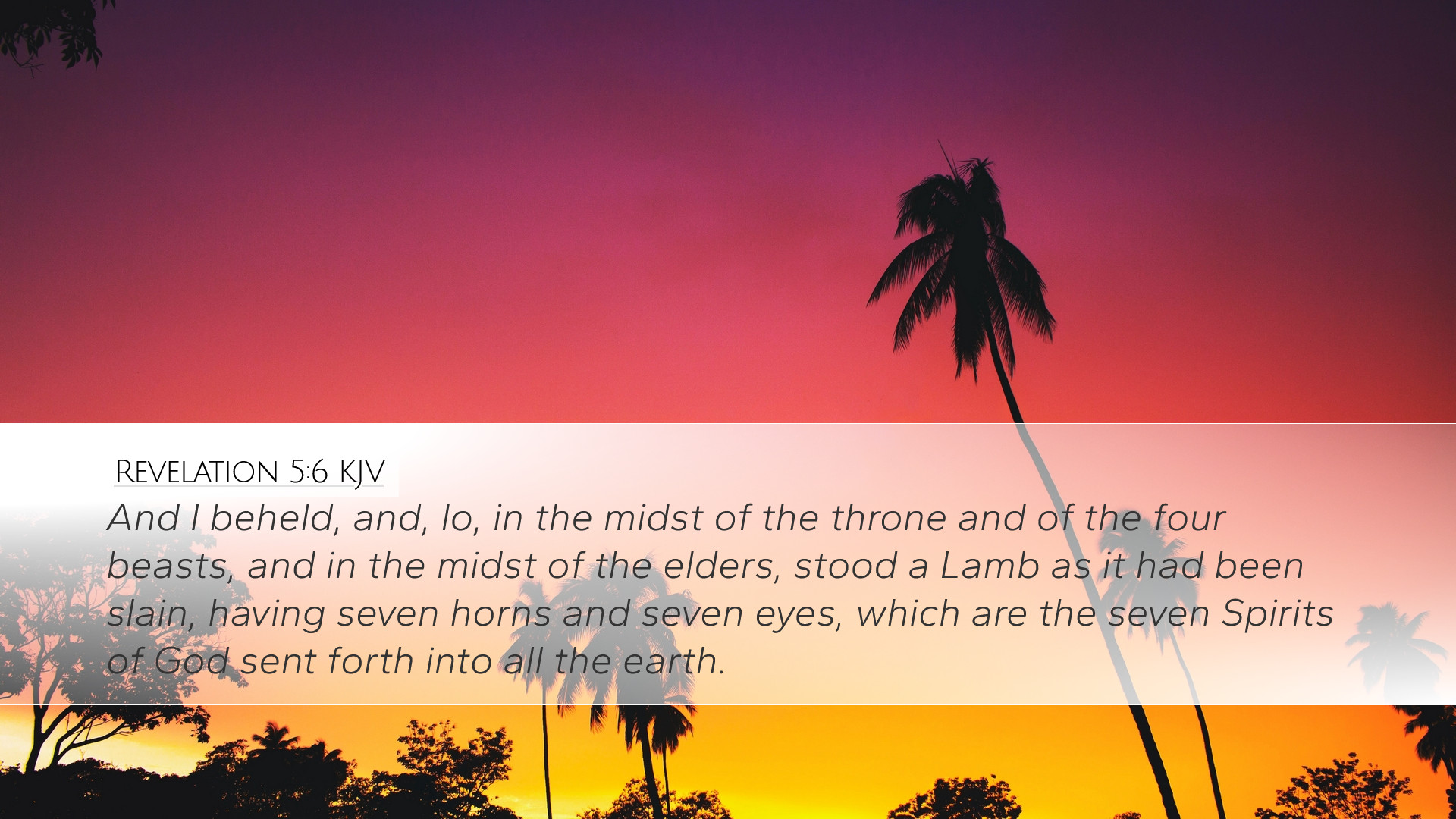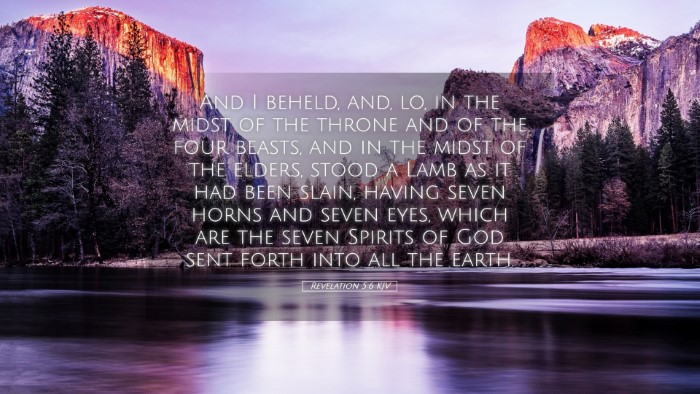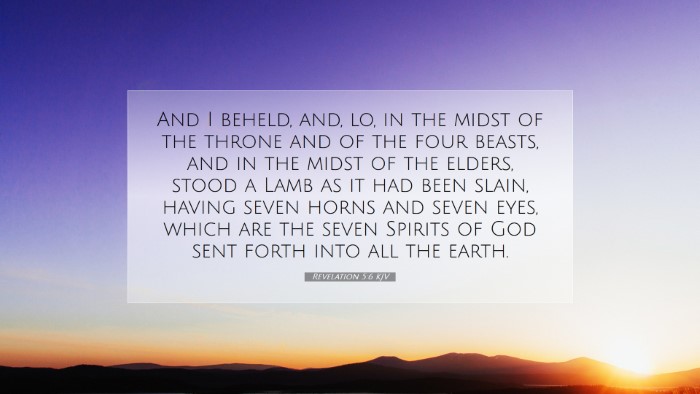Commentary on Revelation 5:6
Introduction: Revelation 5:6 is a pivotal verse in the book of Revelation, which reveals profound theological significance concerning the person and work of Christ as the Lamb. This commentary integrates insights from classic public domain commentaries by Matthew Henry, Albert Barnes, and Adam Clarke to enrich understanding for pastors, students, theologians, and Bible scholars.
Text of Revelation 5:6
"And I beheld, and, lo, in the midst of the throne and of the four beasts, and in the midst of the elders, stood a Lamb as it had been slain, having seven horns and seven eyes, which are the seven Spirits of God sent forth into all the earth."
Exegesis of the Text
Vision of the Lamb: John presents a vision of a Lamb that appears to have been slain. This imagery powerfully conveys the sacrificial nature of Christ’s death, signifying His role as the Redeemer (Matthew Henry). The term “Lamb” not only represents innocence and meekness but also serves as a stark representation of sacrifice, reminiscent of the Passover lamb (Albert Barnes).
- Lamb as an Ongoing Presence: The Lamb stands in the center of the throne, symbolizing His preeminence in both creation and redemption. This positioning reflects His authority and the fulfillment of God’s plan (Adam Clarke).
- Historical Context: The imagery draws upon both Jewish sacrificial practices and prophetic literature, particularly Isaiah 53, which portrays the suffering servant— the Lamb is central to God's redemptive narrative (Henry).
Theological Significance
Seven Horns: The description of the Lamb having seven horns is significant. Horns in the Biblical context symbolize power and authority, and the number seven denotes completeness or perfection (Barnes). Therefore, the seven horns signify the absolute strength and sovereignty of Christ in not only the heavenly realm but also in governance over all creation.
- Sovereignty of Christ: The presence of seven horns symbolizes that Christ possesses all power. His authority is complete, triumphing over all powers and authorities that oppose Him (Henry).
- Symbolism of Sight: The seven eyes represent the omniscience of Christ, who sees and knows all things. This hearkens to the completeness of His wisdom and understanding regarding human affairs and divine purpose (Clarke).
The Seven Spirits of God
Interpretation of the Seven Spirits: The reference to the “seven Spirits of God” signifies the fullness of the Holy Spirit. It suggests that the Spirit is active throughout the earth, empowering and equipping believers (Barnes). This segment emphasizes the connection between the Lamb and the Spirit, reflecting the unity in the Godhead and the operation of God's mission in the world.
- Work of the Holy Spirit: The seven Spirits sent forth represent the work of the Holy Spirit in illuminating, guiding, and sanctifying believers. It underscores the ongoing activity of the Spirit in convicting the world and building the Church (Henry).
- Prophetic Fulfillment: The imagery serves as a fulfillment of Old Testament prophecies concerning the coming of the Messiah and the outpouring of the Spirit, thereby connecting the Old and New Testaments (Clarke).
Conclusion
In Revelation 5:6, the portrayal of the Lamb who was slain juxtaposed with His perfect strength and awareness encapsulates the essence of Christ’s dual nature—His humanity and divinity. This powerful image serves to encourage believers; Christ, victorious over death, is the ultimate authority. His presence and the work of the Holy Spirit assure believers of the ongoing presence of God in their lives.
As pastors and scholars engage with this text, it invites deeper reflection on the implications of Christ’s sacrifice and sovereignty in both personal spirituality and communal worship. The unifying theme of redemption and empowerment by the Spirit continues to resonate, offering profound hope and motivation for the Church today.


